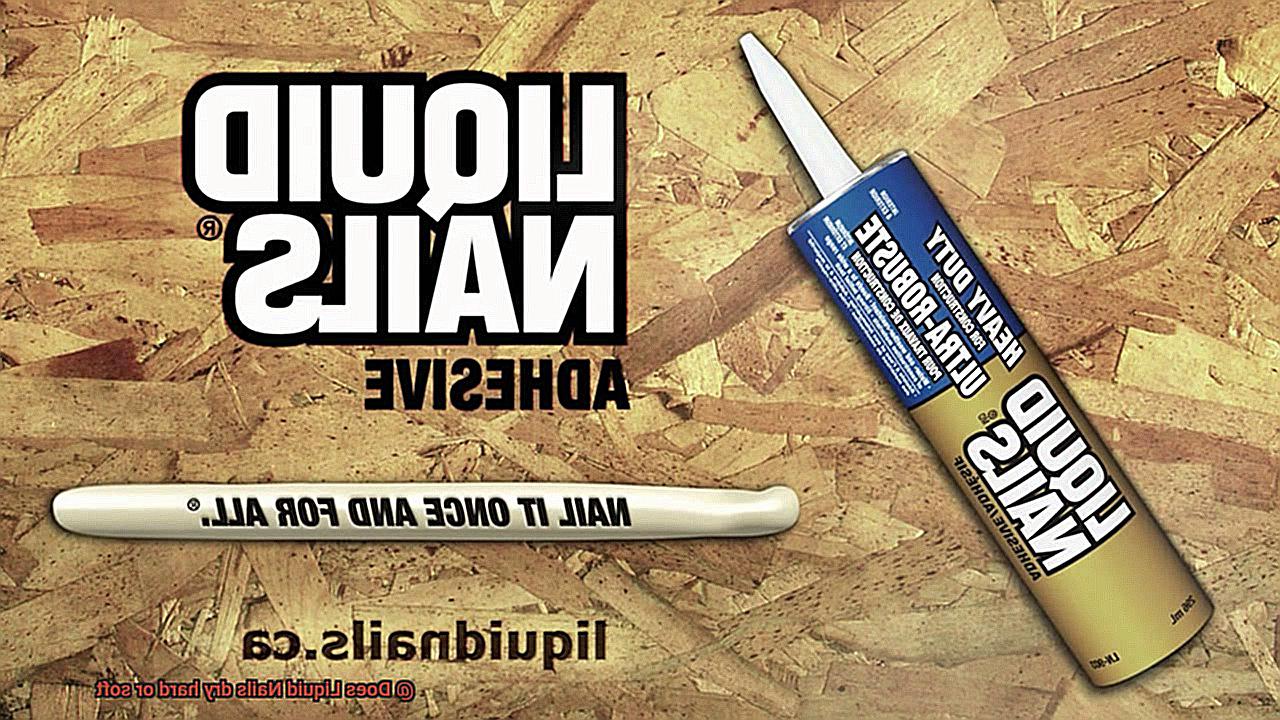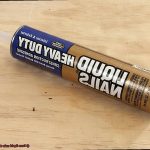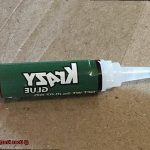Welcome to another blog post, where we dive into the nitty-gritty details of all things adhesive-related. Today, let’s tackle a question that has puzzled many DIY enthusiasts and construction professionals: Does Liquid Nails dry hard or soft?
Liquid Nails, the trusty go-to for all your bonding needs, has proven its worth in countless projects. But when it comes to its final state after drying, there seems to be some confusion.
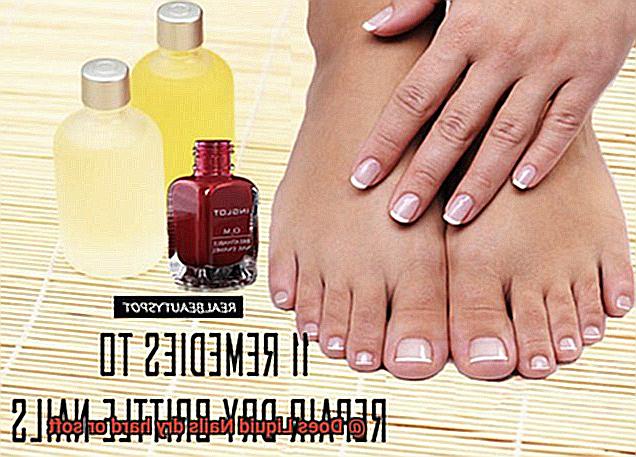
To understand how Liquid Nails dries, let’s shed some light on its composition. This high-strength adhesive contains synthetic rubber called ‘polychloroprene.’ This rubber-like stuff plays a big role in determining whether it dries hard or soft.
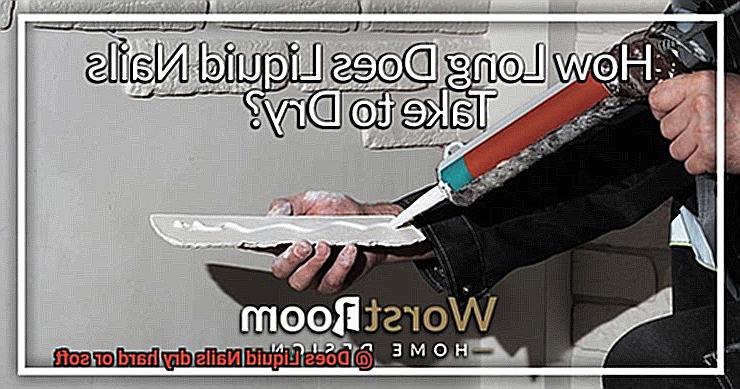
As Liquid Nails dries, the solvent components evaporate and leave behind a durable adhesive. However, drying time can vary depending on factors like temperature, humidity, and how thick you apply it.
Once fully dried, Liquid Nails strikes a balance between hardness and softness. The polychloroprene gives it a semi-flexible property. So while it does dry to a certain hardness, it also retains some elasticity. This means it can handle small movements and adjust to minor shifts in the materials it bonds together.
This characteristic makes Liquid Nails perfect for applications where flexibility is key—like woodwork or materials that expand and contract.
So there you have it – Liquid Nails dries somewhere between hard and soft. It’s tough enough to hold things together but still has a bit of give for those little movements.
Next time you grab a tube of Liquid Nails, rest assured knowing that its unique composition will give you a strong bond with just the right amount of flexibility. Now go tackle your next DIY or construction project with confidence. And stay tuned for more fascinating facts about adhesives in our upcoming posts.
Properties of Liquid Nails
Contents
In the world of construction and repairs, finding an adhesive that can withstand the test of time is paramount. Liquid Nails has emerged as a trusted choice for professionals and DIY enthusiasts alike, thanks to its remarkable properties. In this article, we will delve into these properties and discover why Liquid Nails is the go-to adhesive for all your construction needs.
Unyielding Strength:
Liquid Nails sets itself apart with its remarkable ability to dry and harden after application. Unlike other adhesives that remain soft or pliable even after drying, Liquid Nails forms a solid and unyielding bond. This exceptional property ensures that your projects, whether it’s woodworking, drywall installation, or tile repairs, are built to last. The hardened adhesive offers excellent resistance to impact and vibration, ensuring that your bonds remain intact even in high-stress situations.
Immune to Moisture:
Liquid Nails is designed to withstand moisture, making it suitable for both interior and exterior applications. While some adhesives may weaken or degrade when exposed to water or high humidity levels, Liquid Nails remains impervious. It can confidently be used in areas prone to moisture, such as bathrooms and kitchens, without compromising its bond strength.
Versatile Adhesion:
Another outstanding quality of Liquid Nails is its exceptional adhesion to a wide range of materials. Wood, concrete, metal, ceramic, or stone – Liquid Nails can reliably bond them all together. This versatility allows you to tackle various construction and repair projects with ease. Whether you’re building furniture or repairing a broken step, Liquid Nails will get the job done.
Tailored Variants:
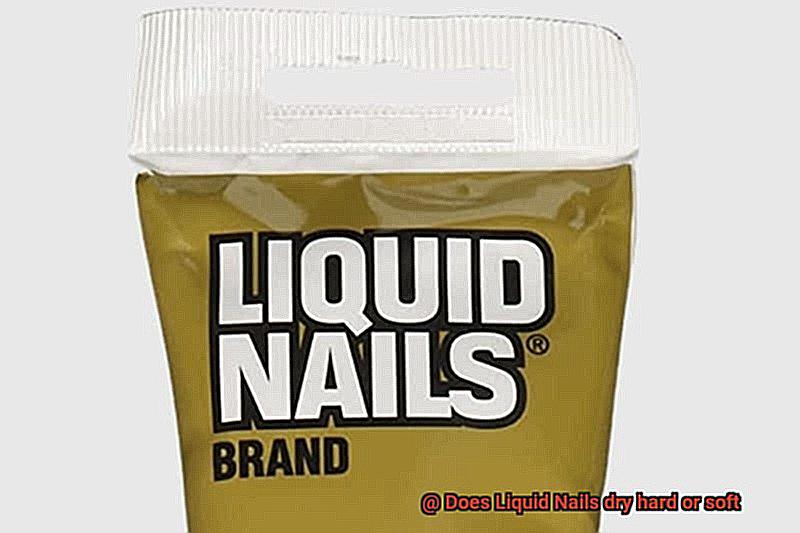
It’s worth noting that Liquid Nails offers different variants tailored to specific applications. These variants may have enhanced features such as faster drying times or improved flexibility. It’s important to choose the variant that best suits your project’s requirements and follow the manufacturer’s instructions for optimal performance.
Application of Liquid Nails
This adhesive superhero is ready to take on any bonding challenge with its unparalleled strength and versatility. Whether you’re a seasoned pro or a DIY enthusiast, understanding the application process and important factors of this mighty adhesive will guarantee that your projects stand the test of time.
Preparation is the key to success when it comes to using Liquid Nails. Before applying this adhesive powerhouse, ensure that your surface is clean, bone dry, and free from any pesky dust or debris. Trust me, a little elbow grease during this stage will go a long way in ensuring an unbreakable bond.
Now it’s time to unleash the power of Liquid Nails. Squeeze it directly from the tube onto your desired surface in a mesmerizing zigzag pattern or in small enchanting dots. To maximize adhesion, it’s best to apply the adhesive in vertical lines. Imagine weaving a web of strength that will hold your materials together like an invincible fortress.
Once you’ve applied the adhesive, press those materials together with unwavering determination and hold them in place for a few minutes. This allows the adhesive to work its magic and form an unyielding bond. And remember, don’t go overboard with squeezing the tube. A little bit of Liquid Nails goes a long way.
Now here’s where patience becomes your superpower. The drying time of Liquid Nails can vary depending on factors like temperature, humidity, and the materials being bonded. Generally, it takes around 24 hours for this adhesive wizardry to fully cure and reach its maximum strength. So resist the urge to test its bond prematurely – let it work its enchantment.

Once dried, Liquid Nails becomes an unyielding fortress capable of withstanding various stresses and strains. It dries hard but retains some flexibility, allowing it to gracefully absorb movements without cracking or losing its bond. Talk about resilience.

And let’s not forget about Liquid Nails’ resistance against moisture, heat, and chemicals. This superhero adhesive can handle both interior and exterior applications with ease, protecting your projects from the relentless elements.
Remember, just like any superhero, Liquid Nails has its own set of guidelines and instructions. Make sure to follow them closely for spellbinding results. Trust me, this adhesive will never let you down.
Curing Process of Liquid Nails
The curing process of Liquid Nails is like witnessing a transformation from Clark Kent to Superman. This adhesive, mighty in its liquid form, undergoes a magical metamorphosis into a solid state, ready to save the day and create an unbreakable bond between materials. Let’s dive into the depths of this curing process and explore how environmental factors can affect it.
Liquid Nails, the construction adhesive of choice for many, is a hero in the world of bonding. Whether it’s wood, metal, concrete, or ceramics, this adhesive has got your back. Once applied to the surfaces you want to join, the curing process begins its epic tale. Now, while it generally takes around 24 hours for Liquid Nails to fully cure and unleash its true strength, always consult the manufacturer’s instructions for precise guidelines.
During this curing process, Liquid Nails experiences a chemical reaction known as polymerization. It’s like molecules exchanging secret handshakes, causing the adhesive to transform from a mere liquid into a solid structure. But wait. Just like any superhero needs time to gather their powers, Liquid Nails requires patience. Avoid subjecting it to stress until it’s fully cured. Testing its strength prematurely might weaken the bond and compromise its performance.
Now, let’s talk about how our heroic adhesive’s curing process can be influenced by environmental factors. Imagine higher temperatures and lower humidity levels acting as jet fuel, speeding up the curing process and getting those molecules shaking hands faster. On the flip side, lower temperatures and higher humidity can put a damper on things, slowing down the cure time.
Proper ventilation is crucial during the curing process. Not only does it allow any fumes or odors from Liquid Nails to dissipate, but it also ensures a safe and comfortable environment for both you and your sidekick adhesive.
Once fully cured, Liquid Nails becomes invincible – an unstoppable force that can withstand temperature changes, vibrations, moisture, and whatever else comes its way. It’s like having a trusty sidekick that never lets you down when you need it most.
Drying Time of Liquid Nails
The drying time of Liquid Nails depends on several factors, so let’s dive in and explore how to achieve optimal results.
First and foremost, Liquid Nails is a versatile adhesive that bonds materials like wood, metal, and concrete. But how long does it take for this superhero glue to dry? Well, it actually depends on a few factors. The type of Liquid Nails product being used and the environmental conditions play a significant role in determining the drying time.
Different Liquid Nails products may have different drying times, so it’s important to check the manufacturer’s instructions for specific guidelines. Generally, Liquid Nails has a relatively long drying time compared to other adhesives. This means you have more time to position and adjust your materials before the glue sets.
Now let’s talk about the environmental factors that can influence drying time. Temperature and humidity are the dynamic duo that can either speed up or slow down the curing process. Higher temperatures and lower humidity levels can make Liquid Nails dry faster, while cooler temperatures and higher humidity levels can extend the drying time. So, if you want speedy results, try working in a warm and dry environment.
Patience is key when it comes to drying time. It’s generally recommended to give Liquid Nails at least 24 hours to fully dry and cure before subjecting the bonded materials to any stress or load. This ensures that the adhesive has reached its maximum strength and durability. But here’s a fun fact – even after Liquid Nails has dried, it continues to cure and strengthen over time.
So, don’t be surprised if your bond becomes even stronger and more durable as days or weeks go by.

To speed up the drying process, some experts suggest using clamps or other forms of pressure to hold the bonded materials together while the adhesive dries. This helps ensure a strong bond and reduces the risk of movement or separation during the drying period. Remember, a little pressure goes a long way in achieving optimal results.
Proper surface preparation is another crucial aspect of achieving a strong and fast bond. Make sure your surfaces are clean, dry, and free from any dust, grease, or other contaminants that may hinder the adhesive’s ability to bond effectively. A little prep work can go a long way in ensuring a successful application.
Lastly, Liquid Nails offers a range of products specifically designed for different applications and materials. Each variant may have different drying times or specific instructions, so it’s essential to read and follow the product label or manufacturer’s recommendations for best results. Don’t let your DIY project be a sticky situation – choose the right Liquid Nails product for the job.
Does Liquid Nails Dry Hard?
This versatile adhesive is known for its ability to bond various materials like wood, metal, and concrete. But does Liquid Nails dry hard? Let’s dive into the science behind this super glue.
Liquid Nails starts off as a thick and viscous liquid, making it easy to apply and spread onto surfaces. As it dries, it undergoes a curing process where it transforms from a liquid to a solid state. This curing process is what gives Liquid Nails its incredible strength and durability.
The drying time of Liquid Nails can vary depending on a few factors. Temperature, humidity, and the type of material being bonded all play a role in how quickly Liquid Nails dries. In general, a warm and dry environment will speed up the drying process, while cold and humid conditions may cause it to take longer.
It’s important to give Liquid Nails enough time to fully dry and cure before subjecting it to stress. While it’s recommended to wait at least 24 hours, keep in mind that the bond continues to strengthen over time even after drying. So, be patient and resist the urge to rush into your project.
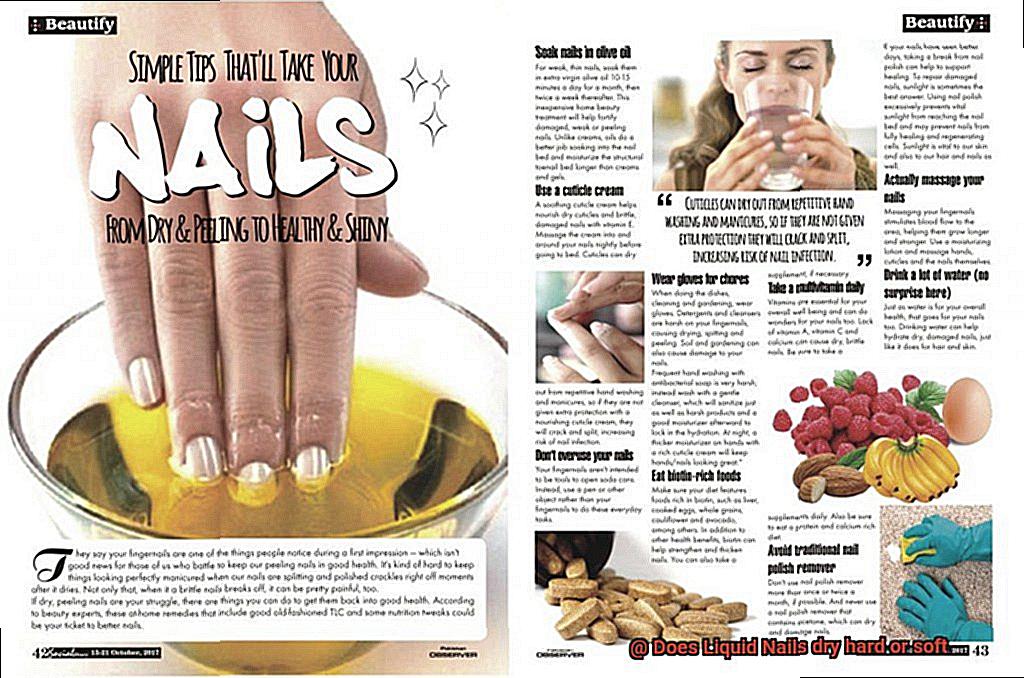
When fully dried and cured, Liquid Nails forms a strong and rigid bond that is resistant to moisture, heat, and impact. It dries hard and solid, making it ideal for applications where a sturdy bond is required. However, it’s worth noting that while it dries hard, Liquid Nails still has some flexibility to accommodate slight movement or expansion/contraction of bonded materials.
So, if you’re looking for an adhesive that dries hard and provides a reliable bond that lasts over time, Liquid Nails is a great choice. Just make sure to follow the specific instructions for the product you’re using, as different Liquid Nails products have varying drying times and application guidelines.
Does Liquid Nails Retain Flexibility?
Liquid Nails, the superhero of construction adhesives, possesses an impressive ability to retain flexibility. With its special polymers, this adhesive adapts to slight movements and vibrations, ensuring a secure bond that won’t crack or weaken under stress. Whether you’re bonding wood, metal, ceramics, or concrete, Liquid Nails is up for the challenge.
Now, let’s get into the nitty-gritty details. The level of flexibility in Liquid Nails may vary depending on the specific variant you choose. Some variants prioritize high flexibility applications, while others focus on a stronger bond. It’s important to select the right variant based on your project’s needs.
To achieve optimal results, follow the manufacturer’s instructions diligently. Apply the adhesive thinly and evenly, allowing ample time for drying and curing. And don’t forget to prepare the surfaces properly – that’s the key to success.
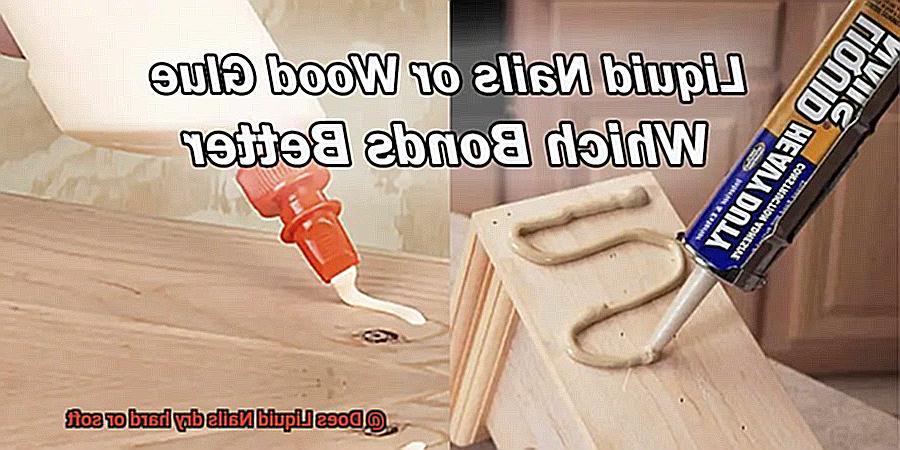
But here’s a little secret: extreme temperatures can impact Liquid Nails’ flexibility. Avoid applying it in freezing cold or scorching heat to keep its superpowers intact.
In conclusion, Liquid Nails is indeed a flexible powerhouse. It’s like having a sidekick that can handle everyday challenges with ease. Just remember to choose the appropriate variant and follow instructions closely for the best results. With Liquid Nails by your side, your projects will be bonded together with strength and a touch of flexibility.
Uses for Liquid Nails
Liquid Nails: The Ultimate Adhesive for All Your Construction and DIY Projects
Are you tired of adhesive failures that leave your construction or DIY projects hanging by a thread? Look no further than Liquid Nails, the superhero of construction adhesives. With its impressive strength, flexibility, and versatility, Liquid Nails is the go-to adhesive for a wide range of applications.
Whether you’re constructing a building or embarking on a creative endeavor, Liquid Nails has got you covered. It’s the adhesive powerhouse that bonds materials like wood, metal, concrete, ceramics, and more. No matter what project lies ahead, Liquid Nails guarantees a firm and durable bond that stands the test of time.
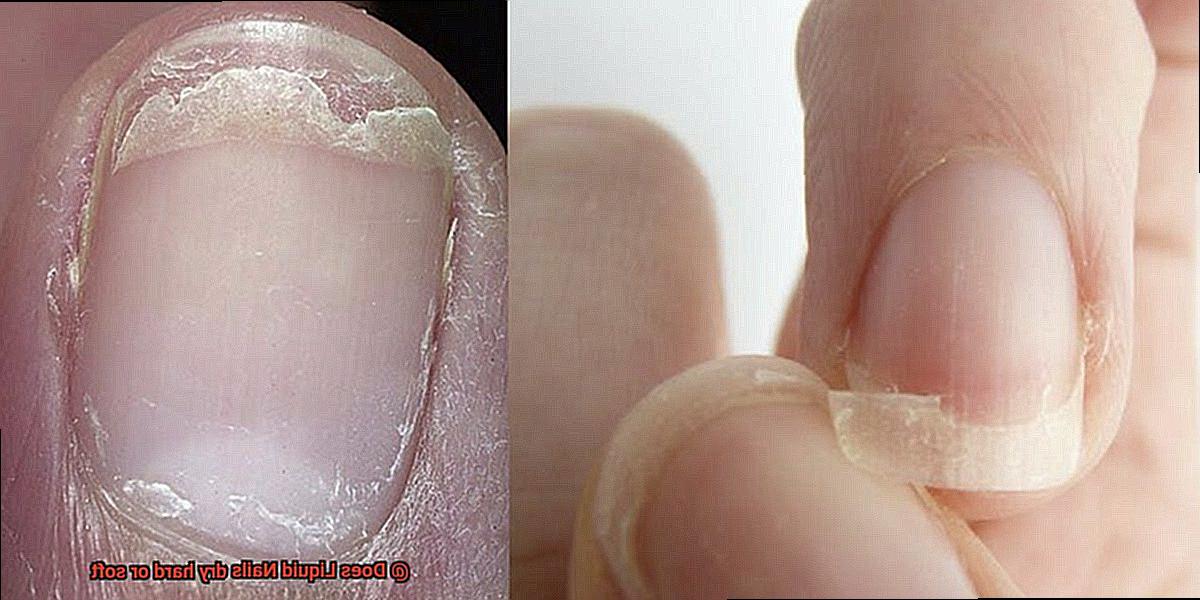
In the world of construction, Liquid Nails is a lifesaver. It securely fastens baseboards, crown molding, and other trim pieces in place. Need to install paneling or drywall? Liquid Nails is your trusted ally. It’s even effective for subflooring and can repair broken or loose tiles with ease. Plus, its water-resistant properties make it perfect for wet areas like bathrooms and kitchens.
But Liquid Nails isn’t just for construction professionals. Crafters and DIY enthusiasts also rely on its adhesive prowess. Use it to bring sculptures, models, and artistic creations to life. Repair furniture or secure loose parts effortlessly. You can even use Liquid Nails to add decorative elements by attaching beads, shells, or stones.
To make the most of Liquid Nails’ incredible power, follow these steps: ensure the surface is clean, dry, and free from dust or grease. Apply the adhesive evenly using a caulking gun or trowel. Then firmly press the materials together and hold them until the adhesive dries completely. While drying times may vary depending on factors like temperature and humidity, rest assured that your project will be bonded with unwavering strength.
Advantages of Using Liquid Nails
Whether you’re a seasoned pro or just starting your DIY journey, Liquid Nails has got your back with its impressive advantages. Let’s dive deeper into why Liquid Nails is the go-to adhesive for many projects.
Advantage #1: Unmatched Bonding Power
Liquid Nails is the secret weapon of adhesive strength. It’s specifically designed to create a rock-solid bond between various materials, from wood and concrete to metal and ceramic. No matter the size of your project, Liquid Nails ensures a reliable and long-lasting bond that won’t let you down.
Advantage #2: The Chameleon of Adhesives
Liquid Nails adapts to any situation with ease. Its versatility shines as it bonds both porous and non-porous surfaces, making it perfect for various materials and projects. Install baseboards, repair broken tiles, or attach trim to walls – Liquid Nails can handle it all.
Advantage #3: Swift-Drying Superhero
Time is precious, and Liquid Nails understands that. While drying times may vary due to external factors like temperature and humidity, this adhesive dries faster compared to other glues. Whether you have a tight schedule or crave quick project completion, Liquid Nails has your back.
Advantage #4: Weather-Resistant Warrior
Liquid Nails fearlessly faces extreme temperatures, moisture, and harsh sun rays. Once dried and cured, this adhesive becomes invincible against Mother Nature’s assaults. Use it indoors or outdoors without worrying about weather conditions – Liquid Nails won’t disappoint.
Advantage #5: Effortless Application, No Sweat.
Say goodbye to adhesive hassles. Liquid Nails is user-friendly and a breeze to apply. Its convenient tube or cartridge packaging allows for easy dispensing of the perfect amount of adhesive. With its smooth consistency, spreading and achieving even coverage is effortless. Get that professional finish without breaking a sweat.
Advantage #6: A Trusted Companion with a Long Shelf Life
Liquid Nails is the adhesive that keeps on giving. It boasts an impressive shelf life, ensuring it remains effective even after extended storage. Don’t waste leftover adhesive from your previous project – Liquid Nails will always be ready for future use. With this reliable companion by your side, you’ll never be without a trusted adhesive.
WSoaX4kgMeg” >
Conclusion
When it comes to the question of whether Liquid Nails dries hard or soft, the answer is clear: Liquid Nails dries hard.
Once it sets, you can trust that your project will stay firmly in place.

